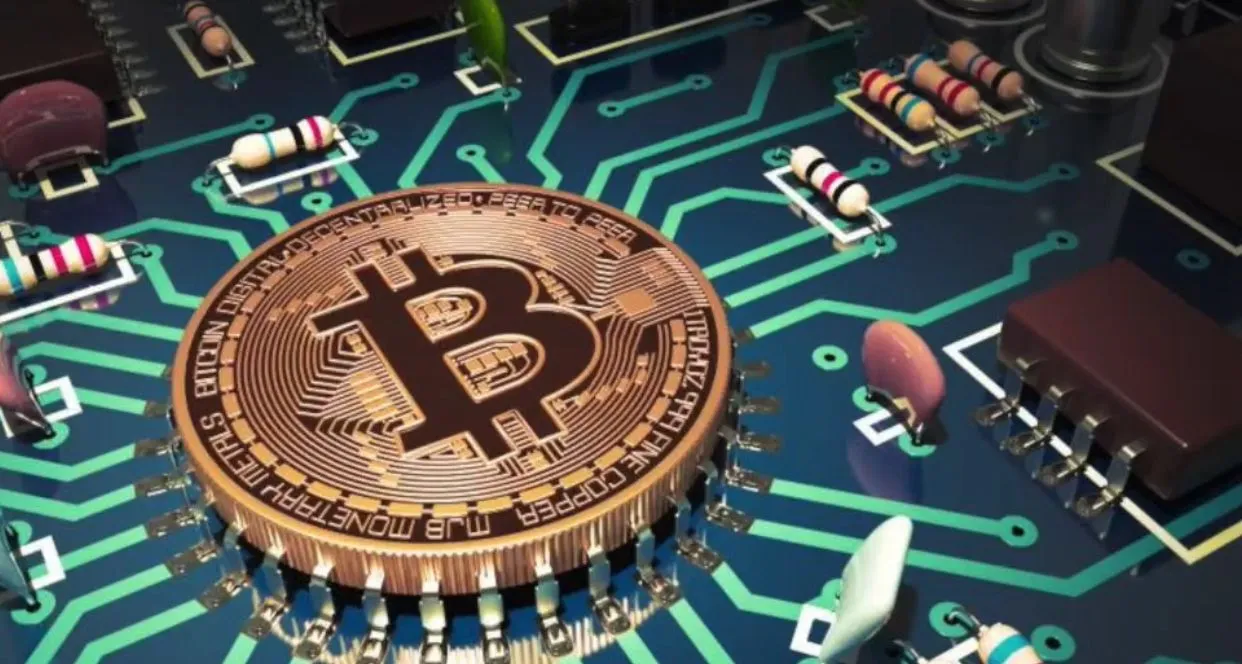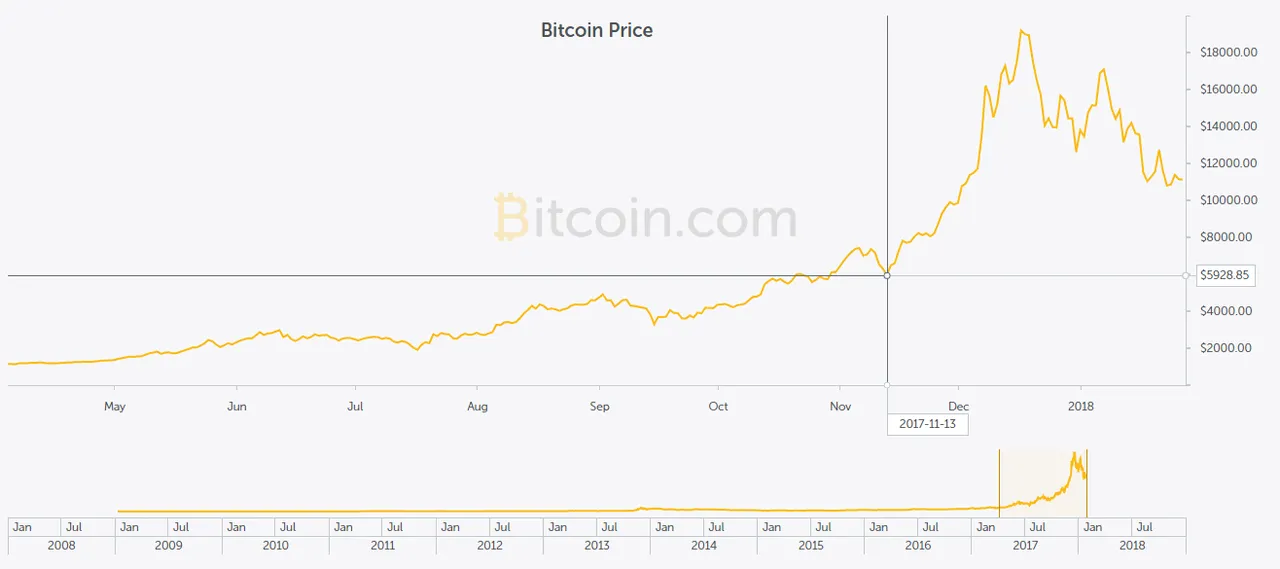
Image provided by 3Dsculptor on shutterstock

If you frequent the use of the internet or watch the news, or you’re not blind and deaf, chances are you’ve recently heard of this thing called a Bitcoin. Maybe you know what it is, and haven’t looked more into it, or you really have no idea what it is or could be (somehow). Well, if you fall into either one of these categories then let me tell you about it. If you don’t want to read the entire article and just want a short explanation I’ll be including one at the end of the article.
Bitcoin is a cryptocurrency. If you don’t know what that is, it’s a type of currency (If that wasn’t obvious enough) that isn’t regulated or controlled by any central banks. This fact alone brings up a number of advantages, the main one being that transactions made using a cryptocurrency cannot be traced or taxed by governments. Given that, you may be thinking that they could be used for buying legally questionable things which I will not mention or get more into detail about in this article. You’re absolutely right so let’s move on.
Cryptocurrencies also are completely safe from counterfeiting, as they use equations to measure how much can be produced by mining PCs (Don’t worry, we’ll get to that later).
These are controlled by cryptocurrency wallets (Which from now on I’ll be calling just “wallets”). Now given, these are not much like real wallets, because they’re digital, and they’re also not much like wallets in general, because they don’t contain currency per se. Their contents are more like records of a transaction being made, which you can then use for spending money. So they’re like gift cards except they’re not near useless.
To make transactions, access to Blockchain is necessary. Blockchain is, as is explained in the official Bitcoin page “a shared public ledger on which the entire Bitcoin network relies.” (You can just apply that to any other cryptocurrency) And it keeps a record of every transaction made using it. This makes it so that users can check their current balance and that people spend their own money, and not other’s.
To do this, Blockchain uses two things, called public and private keys. First things first, both of these types of keys are large integer numbers, (Integer meaning that it doesn’t have any fractional components) but these have so many digits that they’re usually shortened using an encoding method called Wallet Import Format, which converts them into a much shorter version that contains both letters and numbers.
A private key is a private key. But if you want to get more specific, a private key can be thought of as a signature for each user: When an user makes a transaction using a cryptocurrency, said transaction is “signed” with it. This is done to make sure that the payment comes from said user, and not other person. If someone other than the owner of a private key gets said key, they would be able to transfer other user’s money to their own account, so you could think of it as a “password” of sorts. A public key is derived from the user’s private key, and is what other people use to transfer money to said user. This is done by converting it to a simpler format using a hash function (To make it simple, as I don’t completely understand it myself, a hash function is a way to compress varying amounts of information into shorter bits of code at a low processing cost. Here’s the Wikipedia article if you’re interested) which then turns it into the address that everyone sees. The public key contains information about the network and a checksum (A way of checking for errors during transmission or storage of data).
You may be asking yourself (At least I hope I wasn’t the only one) how cryptocurrencies hold their value, since they’re not backed by any country. Well, it’s simple: supply and demand. The more and more people are interested in a certain thing, the demand for it increases. If the demand increases and the supply of “thing” is not enough, the price goes up. I’ll use two examples:
First one is Petro. You might not have heard about, so it is my duty to enlighten you. This is a cryptocurrency created by Nicolás Maduro, backed by the price of a single oil barrel. If you don’t know who he is, I’ll just tell you that he´s the smartest man alive. The Venezuelan population is so interested in this new cryptocurrency that the current price is almost a dollar.
Second one is Bitcoin. Chances are you’ve heard about Bitcoin fairly recently, due to the sharp rise in price which is, at the time of writing this, 11.122,14 USD. According to Bitcoin.com, a slight rise started on 2017 around the end of May and started to snowball at a moderate pace, until the spike in price occurred from November to midway through December. While I don’t exactly know how the interest in Bitcoin raised so much, i would assume it was the slow rise that happened from May to November which starts at 1322 USD and ends (right before the spike) at around 7077 USD. Here's the chart, with the start of the price spike marked:

Now I’ll talk a bit specifically about Bitcoin. Bitcoin is the main cryptocurrency, and also the first one to ever exist. I’ll just be quick because this article is already long enough. In 2008, Satoshi Nakamoto published an article in which he introduced the concept of bitcoin. Satoshi Nakamoto’s identity is not known, so they could be a single person or a group of people. The 3rd of January on 2009, the bitcoin network was created and the first block of Bitcoins (50 of them) was mined by none other than it's creator, Satoshi Nakamoto. The first transaction made had a value of 10.000 Bitcoins which were used to indirectly buy… two pizzas. I have the forum post, but I don’t know if I should put it here because the buyer mentions their zip code. If you just want to know how much that was, according to someone else in the thread it was about 41 USD. Ouch.
Now, what have I been talking about every time I said “mining”? Well, it’s simple. It’s a way to get Bitcoins, for example, as it can be used with other cryptocurrencies. Mining is when a computer (Which usually has a lot of processing power to make it more effective) is used to solve complex math problems. When users are finished with mining, the first one to finish all of these problems is paid with an amount of bitcoins equal to the current block reward. To know what that means, we’ll have to go back to those math problems I mentioned. See, when you mine Bitcoins, you’re given a set of hash functions, which I mentioned earlier. These hash functions are solved with the purpose of verifying previous transactions in the Blockchain, which is the reason why miners are rewarded with free Bitcoins, as it encourages people to mine and helps with security measures. This set of hash functions is called a block. Now, the “block reward” thing. See, Bitcoins are not exactly unlimited. They have a limit to how many can be mined, which is 21 million, and every 210.000 blocks mined the reward for mining one of them will be halved. Starting from 50 on 2009, the block reward is currently 12,5 Bitcoins. So now you can connect the dots. This is the reason why Bitcoin is becoming kind of hazardous, as mining consumes more electricity per year than some countries like Denmark or Ireland.

Summary
Now, for the short explanation (I hope I did this right):
Cryptocurrencies are a type of currency not handled by any country. This also makes them untraceable so you can safely buy coke, I’ll let you guess which type of coke I’m talking about. They’re handled by Blockchain, which is like a public ledger that keeps note of every transaction made using them. To use these, you need a cryptocurrency wallet, which doesn’t really contain your money per se, but more like records of receiving money. To transfer or receive them, you have your private and public key. Your private key works as a signature for your transactions in the sense that it guarantees that it was you who made said transaction. If someone else got it you’d get fucked, to put it shortly. Your public key is the address people use to send money to you. Cryptocurrencies keep their value due to supply and demand, and they can be mined. This, commonly called “Bitcoin mining” is done is by solving a set amount of math problems which are used to verify transactions made in the Blockchain, which uses a large amount of processing power, making mining productive for both parties, the user and network, since the first user, and only the first one to solve all these problems gets a set amount of Bitcoins for it, making a powerful PC almost necessary for this task.

So that’s it. This is my first post, so please have mercy on my soul if I did anything particularly wrong. If there’s anything I think could be wrong is phrasing, since I’m a native Spanish speaker (I’ll be posting this on Spanish later so if you didn’t understand much, look out for that) and I kinda know English. When making my account, I didn’t really know what type of content I should write, so i´m going to try a few different things. If you liked this kind of informative thing, I’ll definitively be making more articles like this, since I had much more fun than I expected. I hope everything I wrote was understandable.
